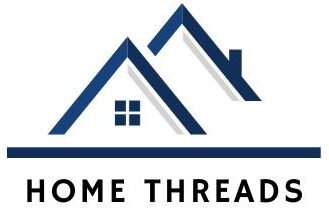Have you ever wondered if your home insurance really protects your work-from-home setup? As millions of Americans turn their living rooms, spare bedrooms, and kitchen tables into offices, the need for specialized protection has never been greater. Working from home insurance isn’t just a buzzword—it’s a crucial safety net for anyone who earns a living from their residence. In this comprehensive guide, you’ll discover why working from home insurance matters, what it covers, how to choose the right policy, and the real-life consequences of being underinsured. Whether you’re a freelancer, a remote employee, or a small business owner, this article will arm you with the knowledge and practical tips you need to safeguard your home office and your livelihood.
1. Understanding Working from Home Insurance
What Is Working from Home Insurance?
Working from home insurance is a specialized type of coverage designed to protect people who conduct business or work remotely from their residence. Unlike standard home insurance, which focuses on personal property and general liability, working from home insurance addresses the unique risks that come with using your home as a workplace. This includes coverage for business equipment, liability for business-related visitors, cyber threats, and even loss of income if your home office becomes unusable .
How Is It Different from Standard Home Insurance?
Standard home insurance policies are built to protect your home’s structure and your personal belongings from risks like fire, theft, and certain natural disasters. They also offer some personal liability protection, but this is usually limited to non-business incidents. When it comes to business activities, these policies often fall short. For example, most home insurance policies cap coverage for business equipment at around $2,500—a figure that’s often too low for a modern home office .
Why Traditional Home Insurance May Not Be Enough
If you’re running a business or working remotely, your home insurance may not cover:
- Expensive business equipment (laptops, monitors, printers)
- Liability if a client or delivery person is injured at your home
- Loss of business income if you can’t work due to a covered event
- Cyberattacks or data breaches involving client information
Failing to disclose your work-from-home status to your insurer can even result in denied claims or policy cancellation . That’s why it’s essential to consider working from home insurance as a separate or additional layer of protection.
2. Who Needs Working from Home Insurance?
Types of Professionals Who Should Consider Coverage
The remote work revolution is here to stay. As of 2025, about 22–28% of U.S. employees work remotely at least part-time, and over half of remote-capable employees are in hybrid roles . This shift includes:
- Freelancers and consultants: Writers, designers, IT professionals, and more
- Remote employees: People working for companies but from their own homes
- Small business owners: Entrepreneurs running e-commerce, consulting, or creative businesses from home
Why Insurance Matters for Different Home-Based Business Models
Each of these groups faces unique risks. For example, a freelance graphic designer may need extra coverage for expensive computers and software, while a home-based therapist might require liability protection for client visits. Even remote employees using company equipment at home can face gaps if their employer’s insurance doesn’t extend to their residence.
Real-Life Examples of Coverage Gaps
Consider these scenarios:
- A consultant’s laptop is stolen during a home break-in, but their home insurance only covers $2,500—far less than the value of their equipment and software.
- A client slips on icy steps while visiting a home office. The homeowner’s insurance denies the claim because it’s business-related.
- A remote worker falls victim to a phishing attack, exposing sensitive client data. Without cyber liability coverage, they’re left to handle the fallout alone .
These examples highlight why working from home insurance is not just a luxury—it’s a necessity.
3. What Does Working from Home Insurance Cover?
Business Equipment Coverage
Most home insurance policies offer limited protection for business property. Working from home insurance can cover:
- Computers, monitors, printers, and other tech
- Specialized tools or equipment
- Office furniture
- Inventory stored at home
Coverage limits can be increased through endorsements or separate policies, ensuring you’re not left paying out of pocket after a loss .
Liability Protection for Clients or Visitors
If you meet with clients, customers, or delivery personnel at your home, you face liability risks that standard home insurance won’t cover. Working from home insurance can provide:
- General liability coverage for injuries or property damage
- Professional liability (errors and omissions) for service-based businesses
- Product liability if you sell goods from home
Data Breach and Cyber Liability Protection
Remote work often means handling sensitive data over less-secure home networks. Cyber liability insurance can help with:
- Costs related to data breaches, including notification and legal fees
- Recovery from ransomware or hacking incidents
- Business interruption caused by cyber events
Loss of Income Due to Business Interruption
If a fire, storm, or other covered event makes your home office unusable, business interruption insurance can replace lost income and help cover ongoing expenses until you’re back up and running .
Property Damage Coverage for Home Office Space
Some policies extend property coverage to the part of your home used for business, helping pay for repairs or rebuilding after a covered loss.
4. Types of Policies for Working from Home Insurance
Homeowners or Renters Insurance Endorsement
A simple endorsement can add limited business coverage to your existing home or renters policy. This is best for low-risk, small-scale operations, as coverage limits are usually modest .
Standalone Business Insurance Policies
For more robust protection, consider a separate in-home business policy. These offer higher limits for business property, liability, and sometimes even lost income .
Business Owner’s Policy (BOP)
A BOP bundles several types of coverage, typically including:
- General liability
- Commercial property (business equipment and inventory)
- Business interruption insurance
BOPs are highly customizable and suitable for most home-based businesses .
Specialty Policies for Specific Professions
Certain professions—like consultants, IT professionals, or creatives—may need specialized coverage, such as:
- Professional liability (errors and omissions)
- Product liability
- Commercial auto insurance for business use of a vehicle
Cyber Liability Insurance
With cyber threats on the rise, many insurers now offer standalone or add-on cyber liability policies for home-based workers .
5. How to Assess Your Insurance Needs When Working from Home
Calculating the Value of Business Equipment and Inventory
Start by making a detailed inventory of all business-related property in your home. List computers, printers, cameras, tools, and any inventory you store. Use receipts, serial numbers, and photos to document everything .
Identifying Liability Risks
Think about who visits your home for business. Do clients come for meetings? Do you receive deliveries? Each visitor increases your liability risk, so consider whether you need extra protection .
Considering Data Security and Cyber Risks
If you handle sensitive client data, process payments, or rely on digital assets, cyber insurance is a must. Assess your exposure to phishing, hacking, and data breaches .
Evaluating the Financial Impact of Business Interruptions
Ask yourself: If a disaster forced you to stop working from home, how much income would you lose? Business interruption insurance can help bridge the gap until you’re operational again .
Consulting with Insurance Professionals
An insurance agent or broker who understands home-based business risks can help you assess your needs and recommend the right mix of policies .
6. Costs and Factors Influencing Working from Home Insurance Premiums
Average Costs
- Home-based business insurance typically ranges from $10 to $37 per month, depending on coverage .
- Standard homeowners insurance averages $2,110 to $2,927 per year for a $300,000–$350,000 home, but this doesn’t include business endorsements .
Factors That Affect Premiums
- Type and amount of coverage: More comprehensive policies cost more.
- Location: Homes in disaster-prone or high-crime areas have higher premiums.
- Value of business equipment: Higher-value items mean higher premiums.
- Type of business: Riskier activities (like meeting clients at home) require more coverage.
- Claims history: Multiple past claims can increase your rates.
- Home age and condition: Older homes or those with outdated systems may cost more to insure .
Balancing Cost vs. Coverage
It’s tempting to choose the cheapest policy, but skimping on coverage can leave you exposed. Instead, look for ways to lower costs without sacrificing protection:
- Increase your deductible
- Bundle policies (e.g., home and business insurance)
- Install security systems or safety features
- Shop around and compare quotes from multiple providers
7. Steps to Get the Right Working from Home Insurance
Research and Compare Insurance Providers
Start by identifying reputable insurers that specialize in home-based business coverage. Top providers in the U.S. include NEXT Insurance, The Hartford, Hiscox, Thimble, and Nationwide, among others .
Questions to Ask Your Insurer
- Does my current home insurance cover business activities?
- What are the coverage limits for business equipment?
- Is liability for business visitors included?
- Can I add cyber liability or business interruption coverage?
- Are there any exclusions I should know about?
Tips for Accurately Reporting Your Home Office Use
Be honest and detailed when describing your business activities and the value of your equipment. Failing to disclose business use can result in denied claims .
Importance of Updating Your Policy Regularly
As your business grows, your insurance needs may change. Review your coverage annually or whenever you acquire new equipment, expand your services, or renovate your home office .
8. Common Mistakes to Avoid When Buying Working from Home Insurance
Assuming Home Insurance Covers Business Activities
Many people mistakenly believe their home insurance will protect their business assets and activities. In reality, most policies exclude or severely limit business coverage .
Underestimating the Value of Business Assets
It’s easy to overlook the true value of your equipment, software, and inventory. Take the time to inventory and appraise everything you use for work .
Overlooking Liability and Cyber Protection
Liability and cyber risks are among the most significant threats to home-based workers. Don’t assume you’re immune just because you work from home .
Not Reading the Fine Print
Always read your policy documents carefully. Look for exclusions, coverage limits, and requirements for filing claims. If you’re unsure, ask your insurer for clarification .
9. Case Studies: Real Examples of Working from Home Insurance Claims
When Insurance Saved a Business
A remote employee tripped over her dog while walking from her home office to the kitchen during work hours. The court ruled in her favor, and workers’ compensation covered her injury. This case shows how work-from-home insurance can protect against unexpected accidents—even in a home setting.
When Coverage Wasn’t Enough
A home-based consultant had expensive equipment damaged in a power surge. Their standard home insurance only covered $2,500, leaving them to pay thousands out of pocket. Afterward, they added a business property endorsement to avoid future losses.
Cyber Liability in Action
A freelancer fell victim to a phishing attack, exposing client data. Because they had cyber liability insurance, the policy covered notification costs, legal fees, and data recovery. Without it, the financial and reputational damage could have been devastating .
Lessons Learned
- Injuries during work hours can be covered if you have the right policy.
- Standard home insurance often denies business-related claims.
- Cyber threats are real, and specialized coverage is essential .
10. Future Trends in Working from Home Insurance
How Remote Work Is Shaping Insurance Products
The remote work trend is here to stay. Insurers are responding by developing flexible, modular products that let you customize coverage for your unique needs. Expect to see more options for business equipment, liability, and cyber protection .
Technological Advances
Digital transformation is making it easier to manage policies and file claims online. Insurers are using AI for underwriting, offering virtual risk assessments, and providing online tools for policy management .
Regulatory and Industry Changes
As the line between personal and business activities blurs, regulators and insurers are updating policy language and compliance frameworks. This ensures remote workers get the protection they need, even as risks evolve .
Focus on Employee Wellbeing
Some insurers are bundling insurance with wellness programs, ergonomic assessments, and mental health support, recognizing the unique challenges of remote work .
Key Takeaways
- Working from home insurance is essential for anyone earning a living from their residence, whether as a freelancer, remote employee, or small business owner.
- Standard home insurance is not enough—it often excludes or limits coverage for business equipment, liability, and cyber risks.
- Assess your needs carefully by inventorying your business assets, evaluating liability and cyber risks, and considering the financial impact of business interruptions.
- Choose the right policy by comparing providers, asking the right questions, and updating your coverage as your business grows.
- Avoid common mistakes like assuming your home insurance is sufficient or underestimating the value of your business assets.
- Stay informed about industry trends to ensure your coverage keeps pace with the evolving world of remote work.
Conclusion
The way America works has changed, and so have the risks. Working from home insurance is no longer optional—it’s a vital part of protecting your home office, your business, and your peace of mind. Don’t wait until disaster strikes to find out you’re underinsured. Take the time to assess your needs, review your current policies, and consult with a professional insurance advisor who understands the unique challenges of remote work. Your business, your clients, and your future depend on it.
FAQ Section
What’s the difference between working from home insurance and home insurance?
Working from home insurance is designed to cover business-related risks—like equipment, liability, and cyber threats—that standard home insurance usually excludes or limits .
Does working from home affect my insurance rates?
Yes, using your home for business can increase your risk profile and may affect your premiums. The type of work, value of equipment, and whether you have business visitors all play a role .
Can I add working from home coverage to my existing home insurance?
In many cases, you can add an endorsement for limited business coverage. However, for more comprehensive protection, a separate in-home business policy or Business Owner’s Policy may be needed .
How do I file a claim if something happens during my work hours at home?
Contact your insurer as soon as possible, provide documentation of the loss or incident, and be prepared to show proof of business use. If you have specialized coverage, your claim is more likely to be approved .







